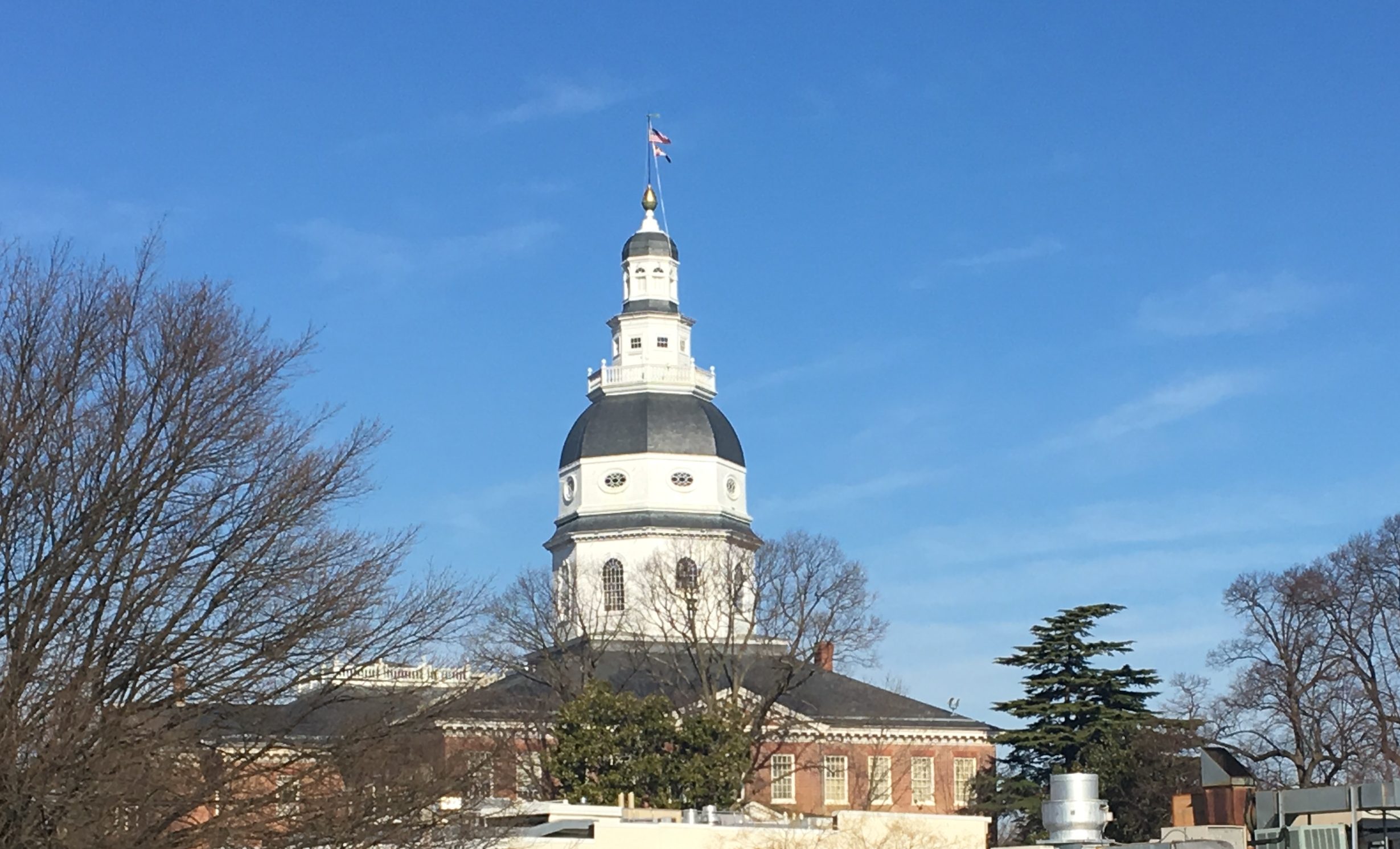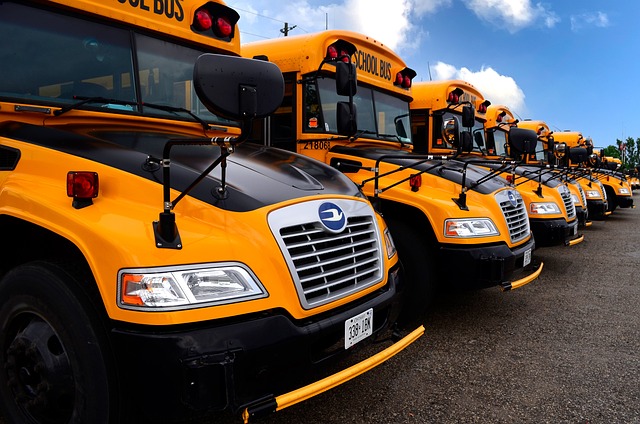Will Maryland’s Blueprint for education work? An oversight board — and district officials — will be watching
By LIZZY ALSPACH and APURVA MAHAJAN
Capital News Service
Maryland plans to spend $16.6 billion through 2029, along with billions more after that, to improve its public schools.
But will it work?
State legislators created a seven-member oversight board to ensure it would.
The Blueprint for Maryland’s Future, a transformative education law passed in 2021, aims to boost student performance and education quality throughout Maryland schools. It outlines these goals in five pillars: the expansion of prekindergarten, the hiring and retention of high-quality and diverse teachers and leaders, college and career readiness, additional resources, and accountability and governance.
Lawmakers established the Blueprint’s Accountability and Implementation Board to monitor the Blueprint’s progress. The board oversees funding and initiative implementation while providing guidance to school districts, all with the intention of improving academic performance in Maryland.
“I think part of it is just understanding that we can do better, we need to do better and we’re going to do better,” said Rachel Hise, executive director of the accountability board. “That’s the promise of the Blueprint.”
School leaders across the state tend to agree — but they said the Blueprint comes with complications that go beyond the financial challenges it poses to the state and its 24 public school districts. Educators said they’re concerned about the Blueprint’s deadlines, a lack of detailed procedural information and the plan’s overall place in the educational system.
“Implementing a law as comprehensive as the Blueprint for Maryland’s Future is going to be a herculean effort under the best of circumstances,” Baltimore City Public Schools officials wrote in their May 1 report to the accountability board. “But combined with the added complexities of pandemic recovery, delays that resulted in extremely limited pre-implementation planning time for districts, and the slow pace of regulations and guidance pertaining to the Blueprint, the challenges are amplified.”
Assessing the Blueprint
The Accountability and Implementation Board will oversee the progress of each public school system in implementing Blueprint initiatives.
The board is by law required to:
- Develop a plan to fully implement the Blueprint in public school systems, complete with timelines and deadlines.
- Monitor the progress school districts and the state are making regarding the Blueprint by reporting annually on 92 data measures, which collect information on student performance, teacher preparation and outcomes backed by Blueprint funding.
- Determine if changes need to be made to the plan to achieve the plan’s original goals.
- Ensure “Expert Review Teams” of teachers, faculty and staff observe schools and understand how to make recommendations about changing how the plan is implemented.
- Release about a quarter of Blueprint funds each year to school systems that are implementing initiatives properly.
- Hire an independent contractor to evaluate the Blueprint’s success.
- Ensure school systems demonstrate at least 75% of funding received per student follows the students to their school.
Under the law, the accountability board can withhold funding from school systems that fail to implement Blueprint initiatives or show significant student progress.
The board holds routine meetings to hear from Marylanders. It also has a series of advisory groups to gather feedback from teachers, parents, students and other stakeholders, according to Laura Stapleton, a board member and chair of the University of Maryland’s Department of Human Development and Quantitative Methodology.
“There’s so many moving parts,” Stapleton said. “Many different stakeholders are needed to implement all the various parts of the Blueprint.”
Stretching deadlines
Every Maryland public school district is responsible for rolling out Blueprint initiatives and collecting each of the 92 different data measures for the Accountability and Implementation Board to evaluate, Stapleton said.
But school district officials said none of that is easy.
“With educational reform of this scale, it is difficult to keep up with the constant changes, timelines and work of each pillar,” Carroll County school district leaders said in their May 1 submission to the accountability board.
Janine Bacquie, Montgomery County Public Schools’ Blueprint implementation coordinator, said her district is straining to properly gather data and implement Blueprint initiatives within allocated deadlines.
“We’re struggling to get the guidance that we need to do the work that we need to do with a short timeline,” Bacquie said. “If we had another year or two, it’d certainly take some of the pressure off.”
All 24 school districts were originally required to submit their final Blueprint implementation plans by March 2024.
But because the state provided necessary materials — such as report templates and expectations — to districts only two months before the March deadline, the submission schedule was revised.
The March deadline was changed so it only had to be a 10-page preliminary report, according to Bacquie. The final report deadline was then pushed back to May 1.
The Accountability and Implementation Board is facing a tough deadline, too. According to Stapleton, an independent contractor is set to perform an evaluation of the Blueprint by October.
But Stapleton said she hopes the deadline for the evaluation can be pushed back a few years to give the Blueprint’s many initiatives more time to lead to change.
A slow flow of information
Meanwhile, Blueprint information seems to move slowly to and through the state’s school districts.
“Because the implementation of Blueprint is massive and encompasses the entire district, one of the biggest challenges is communicating with employees the ways in which their work already aligns with the Blueprint,” Prince George’s County school officials said in their March 2024 submission to the accountability board.
The Accountability and Implementation Board holds regular meetings on Zoom for anyone to attend. All meetings are held online and published in an online archive for anyone to view.
But Javier Valera, a math content specialist at a public middle school in Montgomery County, said he and other teachers have no clue about the depth of information in the Blueprint.
He said the state should work harder to keep teachers informed.
Changes are coming next year, “and we don’t even know anything about it,” Valera said. “It is concerning, because we are going to be the ones implementing the plan. … There should be more transparency and they need to talk with us and let us know what is this about.”
Sparkle Jefferson, an assistant principal at Flintstone Elementary School in Prince George’s County, echoed Valera’s sentiments about a need for more details about the Blueprint.
“There’s a lot of information that definitely needs to be clarified,” Jefferson said. “I think it needs to be disseminated in a clear, concise manner where of course our principals are able to understand — and understand the impact that it has for each school.”
Members of the accountability board encourage community members to provide feedback. Principals, parents and teachers are urged to reach out about the Blueprint, Rachel Amstutz, the accountability board’s policy director, said at a principals conference late last year.
“We need to hear from the local level what’s happening and what you need,” Amstutz said. “We need to hear from our parents what’s working for their kids and what isn’t.”
Lingering concerns
Implementing the Blueprint hasn’t gone exactly as planned so far. Deadlines for criteria and implementation plans have been extended at least three times. And in district-level Blueprint plans submitted this spring, school officials across the state expressed a variety of concerns.
“From funding uncertainties to staffing shortages and delays in receiving critical guidance, the district must navigate various obstacles to ensure the successful execution of Blueprint initiatives,” Caroline County school officials said in their March submission to the accountability board.
Meanwhile, school officials in Allegany County said workforce issues make implementing the Blueprint a challenge. “Sustaining district-level initiatives across all schools is difficult because of staff retirements and turnover rates,” officials wrote in their May 1 report.
In their Blueprint update, St. Mary’s County school officials said they are concerned about all the elements of public education the Blueprint ignores. Other crucial parts of the learning experience could see funding cuts as the district strives to meet the Blueprint’s mandates, they said.
“The ubiquitous challenge inherent in meeting Blueprint goals is in the fact that the Blueprint is silent on supporting all else, i.e., the arts, athletics, enrichment and after-school programming, transportation, facilities, health care, etc.,” St. Mary’s County school officials wrote. “These elements of school are necessary and imperative in supporting the whole child.”
Amid all the concerns, Bacquie, Montgomery County’s Blueprint coordinator, said further delays may be necessary. The rush to complete various measures in the Blueprint could render the plan to reinvent Maryland’s public schools less effective than it could otherwise be, she said.
“It’s not something where you just come in and say something’s going to change overnight,” Bacquie said. “You’re changing hearts, thoughts, minds, strategies.”
Local News Network Director Jerry Zremski contributed to this report.

Capital News Service is a student-powered news organization run by the University of Maryland Philip Merrill College of Journalism. With bureaus in Annapolis and Washington run by professional journalists with decades of experience, they deliver news in multiple formats via partner news organizations and a destination Website.

